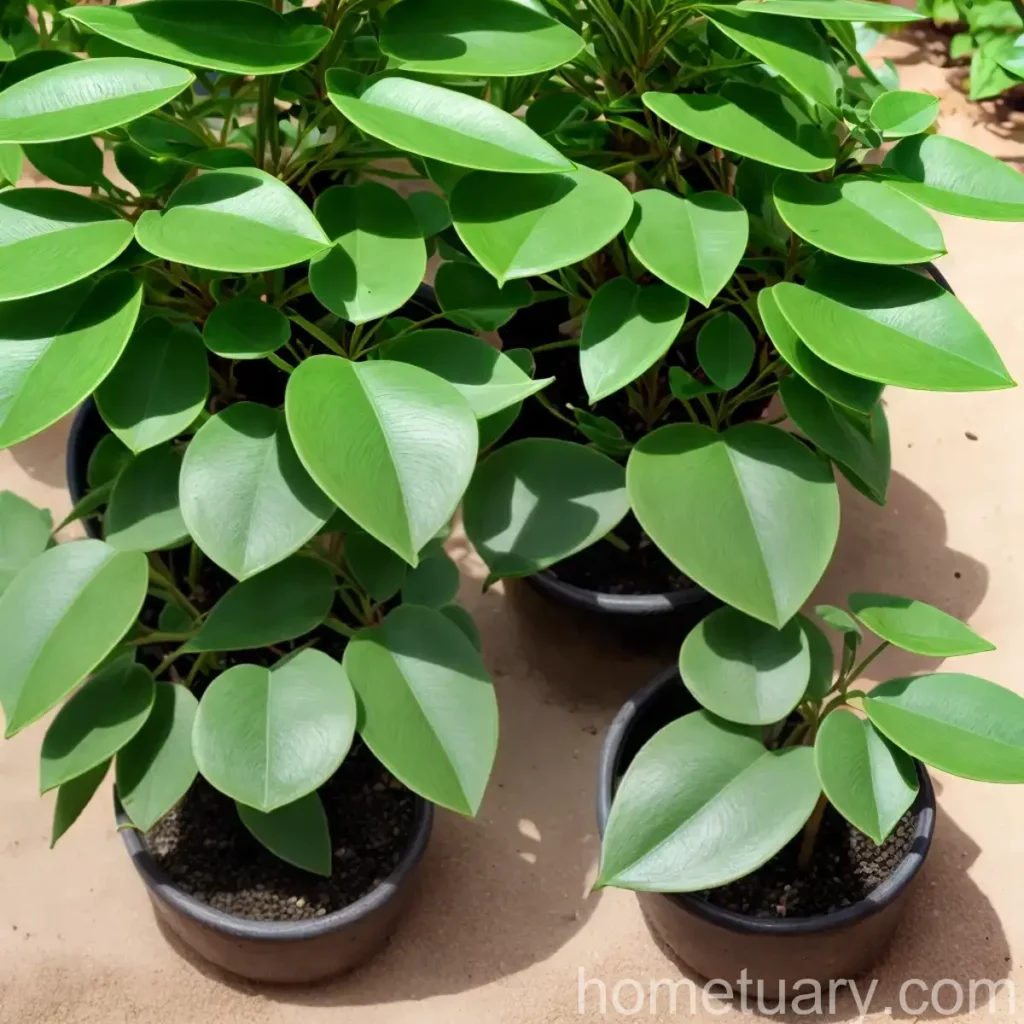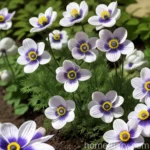Tristaniopsis Laurina (Water Gum): A Comprehensive Guide
Tristaniopsis laurina, commonly known as Water Gum, is a versatile and attractive plant that is highly valued for its ornamental features and adaptability. This plant belongs to the Myrtaceae family and is native to Eastern Australia. Its elegant foliage, attractive bark, and delicate flowers make it a popular choice for landscaping and gardens. In this comprehensive guide, we will delve into the key aspects of Tristaniopsis laurina, including its cultural requirements, uses, propagation, and common diseases.
What is Tristaniopsis Laurina (Water Gum)?
Tristaniopsis laurina, also known by its common names Water Gum or Kanooka, is a small to medium-sized evergreen tree or shrub. It typically reaches a height of 8 to 15 meters, with a rounded and dense crown when mature. The species is endemic to rainforests and wet sclerophyll forests of New South Wales and Queensland, Australia.
Key Takeaways – Tristaniopsis Laurina (Water Gum)
Before we delve into the specifics of Tristaniopsis laurina, here are the key takeaways:
- Scientific Name: Tristaniopsis laurina
- Common Names: Water Gum, Kanooka
- Family: Myrtaceae
- Native Habitat: Eastern Australia
- Characteristics: Evergreen, elegant foliage, attractive bark, delicate flowers
- Uses: Ornamental tree, landscaping, gardens
- Cultural Requirements: Water, sunlight, soil, fertilizer, pruning
- Propagation: Seeds, cuttings
- Common Diseases: Myrtle rust, sooty mold
- Common Pests: Aphids, scale insects
Now, let’s delve into the specific aspects of Tristaniopsis laurina, including its cultural requirements, uses, propagation, and maintenance.
Culture
Tristaniopsis laurina is known for its relatively easy and adaptable cultural requirements. Whether used as an ornamental tree in a garden or as part of a landscaping project, understanding its cultural needs is essential for ensuring its healthy growth and development.
Water
Water is crucial for the establishment and early growth of Tristaniopsis laurina. While this species is relatively tolerant of various soil moisture conditions once established, consistent moisture is essential, especially during the first few years after planting. Adequate watering is particularly important during dry periods to prevent water stress and promote optimal growth.
Sunlight
Tristaniopsis laurina thrives in a position with full sun to partial shade. In its natural habitat, it is often found growing in semi-shaded locations under the canopy of taller trees. When grown in a garden or landscape, it is essential to provide adequate sunlight to ensure healthy growth and abundant flowering.
Fertilizer
Proper fertilization can help promote healthy growth and enhance the ornamental features of Tristaniopsis laurina. A balanced, slow-release fertilizer can be applied during the growing season to provide essential nutrients. It’s important to follow the manufacturer’s recommendations and avoid over-fertilization, which can lead to excessive vegetative growth at the expense of flowering.
Soil
Tristaniopsis laurina is adaptable to a wide range of soil types, including clay, loam, and sandy soils. However, it thrives in well-draining, slightly acidic to neutral soils. Prior to planting, it is beneficial to improve the soil structure and fertility by incorporating organic matter, such as compost or well-rotted manure.
Pruning
Regular pruning is essential for shaping Tristaniopsis laurina, removing dead or damaged branches, and promoting a dense and compact growth habit. Pruning can be carried out during the dormant season to minimize stress on the plant. It’s important to use clean, sharp pruning tools to make precise cuts and avoid tearing the bark.
Uses
Tristaniopsis laurina is a versatile plant with numerous potential uses in landscaping, gardens, and urban environments. Its ornamental characteristics and adaptability make it a valuable addition to a wide range of settings.
Ornamental Tree
As an ornamental tree, Tristaniopsis laurina is prized for its elegant foliage, attractive bark, and delicate, cream-colored flowers. It can serve as a focal point in a garden or as part of a mixed planting scheme, adding year-round interest and visual appeal.
Landscaping
Water Gum is well-suited for landscaping in parks, commercial properties, and residential developments. Its moderate size, attractive appearance, and tolerance of urban conditions make it a desirable choice for adding greenery and natural beauty to the built environment.
Gardens
Within a garden setting, Tristaniopsis laurina can be used as a standalone specimen tree, planted in groups for a striking display, or incorporated into mixed borders and shrubbery. Its evergreen foliage provides color and structure throughout the year, making it a valuable addition to various garden styles.
Propagation
The propagation of Tristaniopsis laurina can be achieved through both seeds and cuttings. Understanding the propagation methods is essential for those looking to propagate this species for ornamental or conservation purposes.
Seeds
Tristaniopsis laurina produces small, woody capsules containing numerous tiny seeds. To propagate from seeds, collect mature capsules from the tree and extract the seeds. Sow the seeds in a well-draining seed-raising mix and provide the warmth and moisture necessary for germination.
Cuttings
Propagation from cuttings is another effective method for multiplying desirable forms of Tristaniopsis laurina. Semi-hardwood cuttings can be taken during the growing season and treated with a rooting hormone to stimulate the development of roots. The cuttings can then be placed in a suitable propagation medium and provided with the right conditions for root development.
Container Popularity
Tristaniopsis laurina is also grown in containers, making it suitable for urban environments and small gardens. Its adaptable nature and ornamental qualities make it an attractive choice for container gardening. When grown in containers, it is important to consider its cultural requirements and provide the necessary care for healthy growth.
Common Diseases
While generally resilient, Tristaniopsis laurina is susceptible to certain diseases that can affect its health and appearance. Understanding and recognizing these diseases is essential for implementing effective management strategies.
Myrtle Rust
Myrtle rust, caused by the fungal pathogen Austropuccinia psidii, can affect Tristaniopsis laurina, leading to the development of rust-colored pustules on the leaves and shoots. This can result in defoliation and stunted growth if left untreated. Managing myrtle rust may involve the use of fungicidal sprays and cultural practices to minimize its impact.
Sooty Mold
Sooty mold is a common issue that can affect Tristaniopsis laurina as a result of honeydew secretions from sap-sucking insects such as scale insects or aphids. The black, powdery mold can develop on the foliage, affecting the plant’s photosynthetic capabilities. Controlling the underlying insect infestation is key to preventing the development of sooty mold.
Disease Diagnosis
Diagnosing diseases affecting Tristaniopsis laurina involves careful observation of symptoms, including changes in leaf color, abnormal growth, and the presence of pests or pathogens. Seeking assistance from experienced horticulturists or plant pathologists can help confirm the diagnosis and identify the most appropriate course of action.
Common Pests
Several pests can potentially infest Tristaniopsis laurina, impacting its growth and overall health. Identifying and managing these pests is crucial for maintaining the vigor and ornamental value of the plant.
Aphids
Aphids are small, sap-sucking insects that can infest the tender shoots and foliage of Tristaniopsis laurina, causing distortion of young growth and the development of sticky honeydew. Natural predators and the careful use of insecticidal soaps or oils can help manage aphid populations.
Scale Insects
Scale insects are another potential pest of Tristaniopsis laurina, appearing as small, immobile bumps on the stems and leaves. They feed on plant sap and can weaken the tree over time. Controlling scale insects may involve the application of horticultural oils or systemic insecticides.
Botanist’s Tips
For enthusiasts and horticulturists interested in growing and appreciating Tristaniopsis laurina, here are some valuable tips to enhance the success and enjoyment of cultivating this species:
- Select a suitable location with well-draining soil and adequate sunlight.
- Water young plants regularly to promote establishment and root development.
- Monitor for signs of pests and diseases, and take prompt action if detected.
- Incorporate Tristaniopsis laurina into diverse planting schemes for visual interest and biodiversity.
- Prune with care to maintain a balanced and natural growth habit.
Fun Facts
Discover some intriguing and lesser-known facts about Tristaniopsis laurina:
- The attractive bark of Water Gum features patches of grey, brown, and cream, adding to its aesthetic appeal in the landscape.
- Tristaniopsis laurina is a valuable source of nectar for bees and other pollinators, contributing to local biodiversity.
- The species has been used in revegetation projects to restore native vegetation in degraded habitats, showcasing its ecological significance.
Links to External Resources
Explore further information and resources about Tristaniopsis laurina:
- Australian Native Plants Society (Australia)
- Royal Botanic Gardens Victoria
- PlantNet – New South Wales Flora Online
Conclusion
Tristaniopsis laurina, also known as Water Gum, is a captivating and versatile plant that offers numerous ornamental and ecological benefits. Whether used as an elegant feature tree in a garden or as part of a larger landscaping project, its adaptability and aesthetic appeal make it a valuable addition to diverse settings. By understanding its cultural requirements, propagation methods, and potential challenges, individuals can successfully grow and appreciate the beauty of Tristaniopsis laurina. Remember to explore local regulations and recommendations before introducing this species into new environments, and always consider its potential impact on native ecosystems. With proper care and attention, Water Gum can thrive and contribute to the natural splendor of gardens and landscapes.
Remember, the subtle elegance of Tristaniopsis laurina, with its evergreen foliage and delicate flowers, continues to inspire and enrich the horticultural world. Whether nestled within a woodland garden or gracing an urban streetscape, the Water Gum is a testament to the enduring allure of native Australian plants.
For those who savor the artistry of horticulture and the innate beauty of plants, Tristaniopsis laurina exemplifies the captivating possibilities of sustainable landscaping and the timeless joys of nurturing living landscapes.















